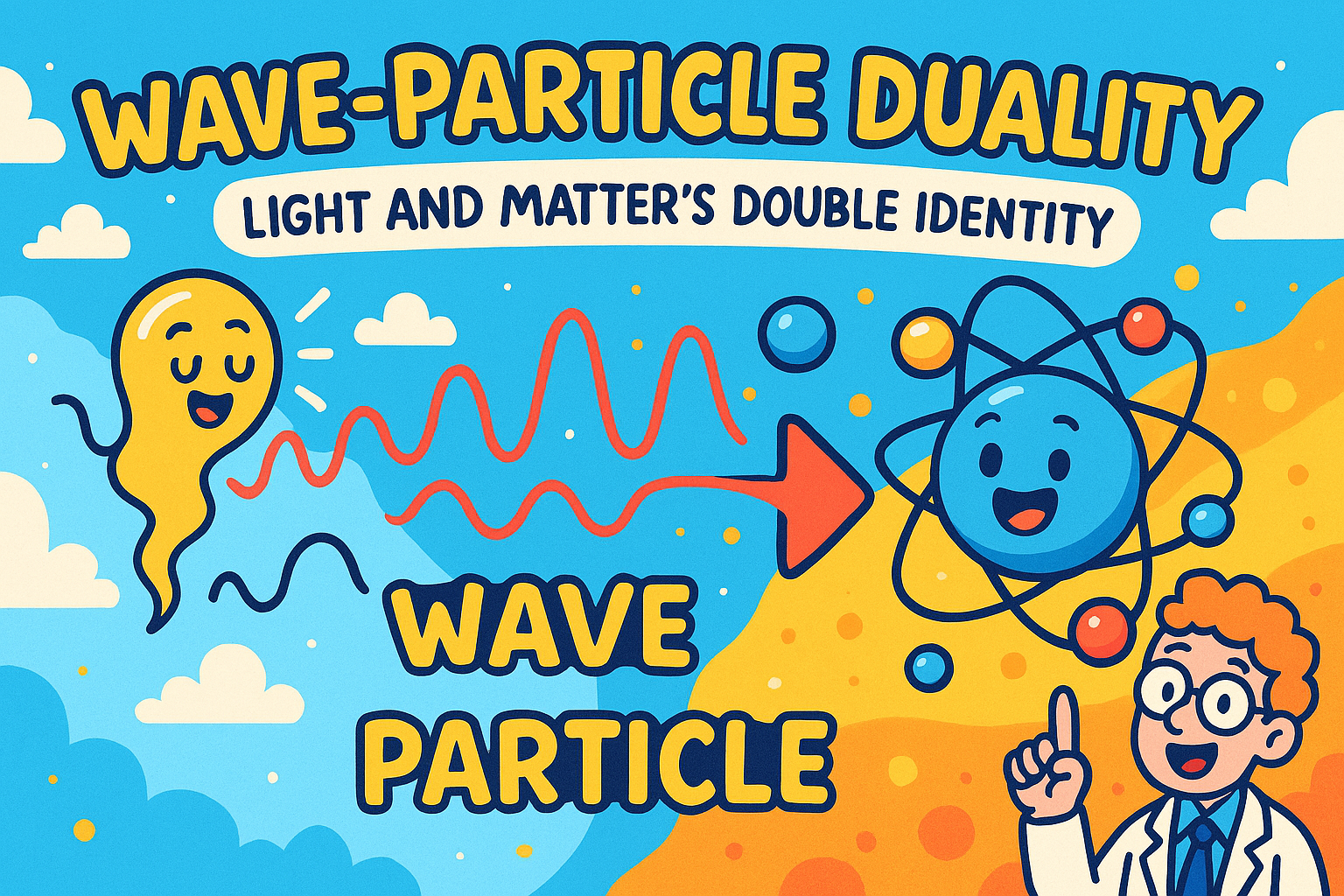Teaching Wave-Particle Duality: Engaging Strategies for Educators
Lesson Plan - Teaching Wave-Particle Duality: Engaging Strategies for Educators
Wave-particle duality is one of the strangest and most important ideas in modern physics. It tells us that light and matter can behave in two completely different ways—sometimes like particles, and sometimes like waves. This idea helps explain how tiny things in the universe behave, especially at the atomic and subatomic levels.
A particle is usually thought of as a tiny, solid bit of something—like a grain of sand or a speck of dust. A wave, on the other hand, spreads out and carries energy, like ripples in a pond or sound moving through the air. Scientists once believed these were two separate things. But experiments showed that light, and even matter like electrons, could behave like both, depending on how we observe them.
This discovery came from famous experiments such as the double-slit experiment and the photoelectric effect. These helped show that observing something at a very small scale can change what it does. This is what we call the observer effect.
Understanding wave-particle duality helps scientists build things like solar panels, lasers, and electron microscopes. It also gives us clues about the deeper laws of the universe that are still being explored today.
This topic is part of our Info Zone collection. You can read the full topic, once logged in, here: Wave-Particle Duality: Exploring Light and Matter’s Dual Nature
You’ll also find a full Lesson Plan and a handy Parent Q & A sheet, for this topic, ready to use..
Members Only
You need to be registered and logged in to access this lesson plan and all other learning resources, games and quizzes.
